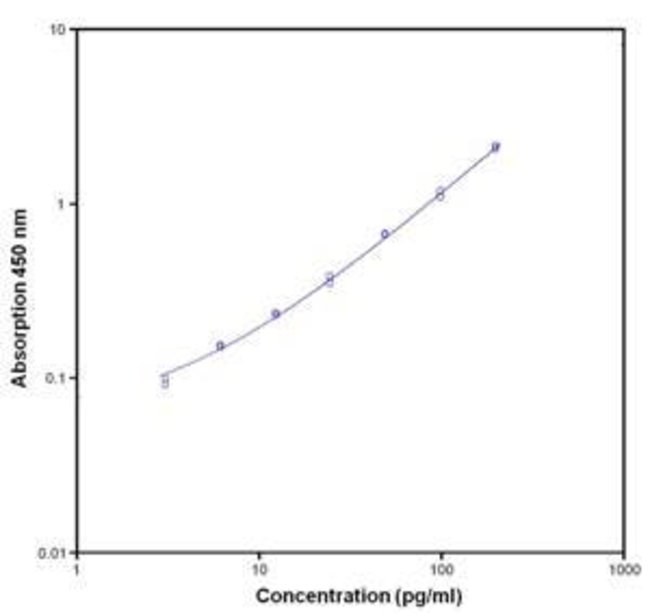IL-10 Human Instant ELISA Kit, Instant ELISA Kit, Each

|
|
Details:
The Human Interleukin 10 (Hu IL-10) ELISA quantitates Hu IL-10 in human serum, plasma, cell culture supernatants or other body fluids. The assay will exclusively recognize both natural and recombinant Hu IL-10. Principle of the method The Human IL-10 solid-phase sandwich ELISA (enzyme-linked immunosorbent assay) is designed to measure the amount of the target bound between a matched antibody pair. A target-specific antibody has been pre-coated in the wells of the supplied microplate. Samples or controls are then added into these wells and bind to the immobilized (capture) antibody. The sandwich is formed by the binding of the second (detector) antibody to the target on a different epitope from the capture antibody. An antibody conjugated with enzyme binds the formed sandwich. After incubation and washing steps to rid the microplate of unbound substances, a substrate solution is added that reacts with the enzyme-antibody-target complex to produce measurable signal. The intensity of this signal is directly proportional to the concentration of target present in the original specimen. Rigorous validation Each manufactured lot of this ELISA kit is quality tested for criteria such as sensitivity, specificity, precision, and lot-to-lot consistency. See manual for more information on validation.Interleukin-10 is a pleiotropic cytokine playing an important role as a regulator of lymphoid and myeloid cell function. In humans IL-10 is produced by activated CD8( ) peripheral blood T-cells, by T-helper CD4( ) T-cell clones. Due to the ability of IL-10 to block cytokine synthesis and several accessory cell functions of macrophages this cytokine is a potent suppressor of the effector functions of macrophages, T-cells and NK cells. In addition, IL-10 participates in regulating proliferation and differentiation of B-cells, mast cells and thymocytes. The primary structure of human IL-10 has been determined by cloning the cDNA encoding the cytokine. The corresponding protein exerts 160 amino acids with a predicted molecular mass of 18.5 kDa. Based on its primary structure, IL-10 is a member of the four a-helix bundle family of cytokines. In solution human IL-10 is a homodimer with an apparent molecular mass of 39 kDa. Although it contains an N-linked, glycosylation site, it lacks detectable carbohydrates. Recombinant protein expressed in E. coli thus retains all known biological activities. The human IL-10 gene is located on chromosome 1 and is present as a single copy in the genome. The human IL-10 exhibits strong DNA and amino acid sequence homology to the murine IL-10 and an open reading frame in the Epstein-Barr virus genome, BCRF1 which shares many of the cellular cytokine's biological activities and may therefore play a role in the host-virus interaction. The immunosuppressive properties of IL-10 suggest a possible clinical use of IL-10 in suppressing rejections of grafts after organ transplantations. IL-10 can furthermore exert strong anti-inflammatory activities.
Additional Information
| SKU | 1446159 |
|---|---|
| UOM | Each |
| UNSPSC | 41116158 |
| Manufacturer Part Number | BMS215INST |

